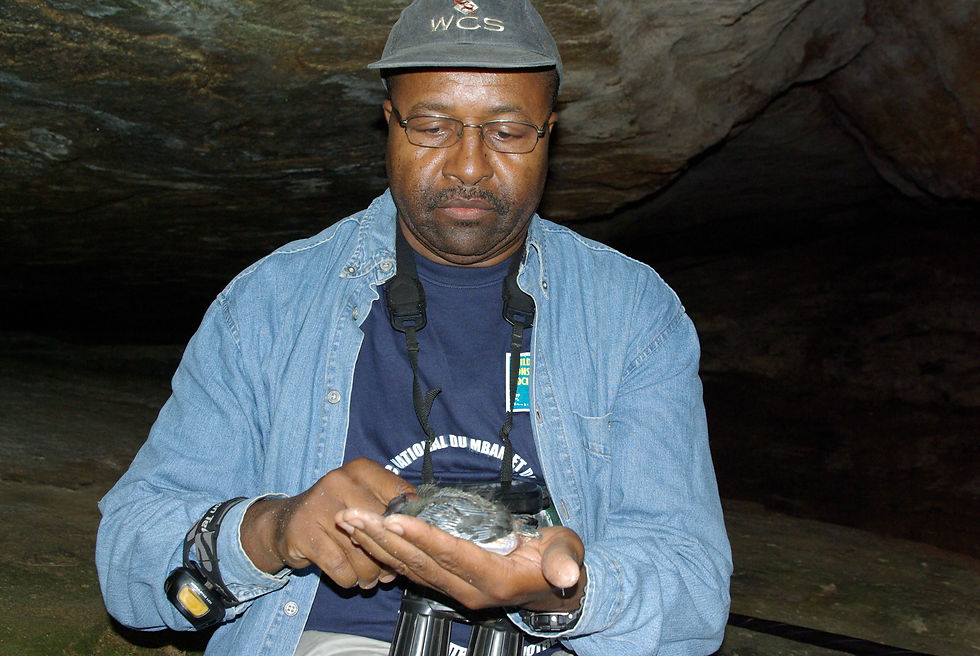Roger Fotso
- EPI Secretariat

- Aug 4, 2021
- 2 min read
Our Friend of the Month for August is Roger Fotso, who works for our partners WCS, as country director in his native Cameroon.

Dear Roger - please tell us where you grew up in Cameroon and whether you had much contact with the natural world as a young child?
I grew up in a town but spent a lot of time with my grandparents in our home village of Baham, in Western Cameroon, where we were in close contact with nature. At high school I was active in the school nature club and had the chance to join many of their field trips.
Was your career always in conservation? How did you become country director for WCS?
I started my conservation career as a volunteer on the Oku Mountain Forest project in the Western Highlands of Cameroon. Several years later, after completing my PhD at the Katholieke Universiteit of Leuven in Belgium, I worked for ECOFAC Cameroon as a research coordinator, before moving to WCS.
Cameroon is a country of incredible natural diversity - mountains and lowland forests to savannahs…is there one place that you find most exciting and relaxing to visit?
I enjoy them all, but I think my favourite is the lowland forest. I have always been impressed by the forest architecture - the shapes and formations of the trees and other plants - and hope this can be a fortress, guarding against aggression and destruction. Another reason I love the forest is that there is always something new to discover in its very peaceful environment.
In the period around 2012, we heard many alarming reports of elephant poaching in Cameroon. How would you characterise the situation of elephants in Cameroon today?
Elephants in Cameroon, as in other regions of Central Africa, are under siege and highly threatened. The Bouba Ndjida 2012 elephant massacre [in which heavily armed poachers killed hundreds of elephants] received a lot of publicity, and this raised awareness about the fate of elephants in our region. Unfortunately, it was not a one-off event. The slaughter continues, especially in the forest where it is not so easy to see. You just have to consider the large quantities of ivory that law enforcement personnel regularly confiscate from traffickers all over Central Africa.
What do you think are the biggest threats to Cameroon’s elephants - organised ivory poaching, or loss of habitat and a subsequent increase in human-elephant conflict?
It will be reasonable to say that ivory poaching and loss of habitats are the biggest threats to the elephants of Cameroon.





Comments